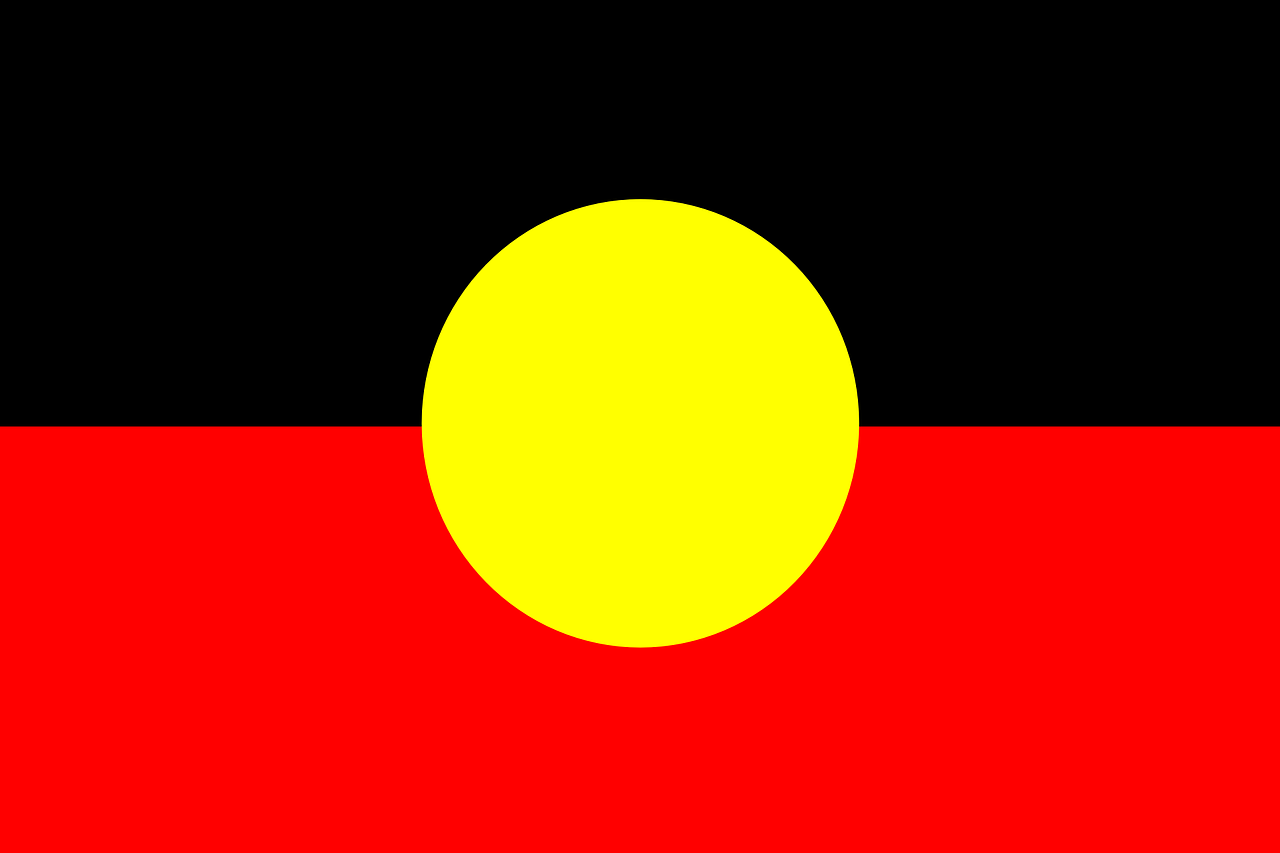Image description: The Aboriginal flag. The top half of the flag is black; the bottom half is red; and in the middle is a golden yellow circle.
By Tyson McEwan
Background
For some years now, there has been a conflict occurring out of sight of the public, involving the right to access the Aboriginal flag.
It began with both Aboriginal and non-Aboriginal businesses selling merchandise displaying the Aboriginal flag, which – unknown to them or the general public – had been exclusively licensed to WAM Clothing, by the artist Harold Thomas.
Recently, the flag dispute has arisen in public conversations and media headlines as sporting juggernauts such as the AFL and NRL have been issued with copyright infringement notices. The sporting codes have sided with the “free the flag” movement in calls for amendments to the licensing agreement around the Aboriginal flag, to allow Australians and Aboriginal people to use the flag freely.
Issue
The Aboriginal flag was proclaimed by the Commonwealth Government in 1995, making it an official flag of Australia under the Flags Act 1953. This explains the national significance for the Australian community when the Aboriginal flag flies alongside the Australian flag.
During the mass reporting by the media on the flag dispute, and seeing many articles being shared on social media, I was curious about what people were saying.
For me, reading the comment section can be difficult because of the unfiltered and most-times derogatory comments towards Aboriginal people. However, yes, I did read the comments – and, not to my surprise, there were still the same attitudes and views being expressed. The classic view of ‘us’ and ‘them’ were being shared by many when discussing the use of the Aboriginal and Australian flags.
It is hard to fathom this, when both flags are given national status under the Flags Act; the debate is not about what flag you pick and choose as priority, but about the restrictions imposed on one of our national flags, the Aboriginal flag, which we are entitled to. This is a matter of national interest, so all Australians should be concerned with the current licensing agreement, and should be fighting to make the flag accessible.
I respect the artist and his right to copyright, as well the entitlements that comes with that right. I do not ask to have it removed; I ask him to change his priority for our national flag.
Current Climate
The stalemate between the Licensee (WAM Clothing) and Licensor (Harold Thomas) failing to reach a consensus over the use of the Aboriginal Flag has created a windfall of false hope. Federal Minister for Aboriginal Affairs, Ken Wyatt, has intervened in the bitter dispute to resolve the issue, indicating a willingness to buy the copyright outright to prevent further implications in the future. With this, the focus has been shifted to how much is it going to cost us? What is the price? These things should not be a factor when considering the importance and significance of the Aboriginal Flag. We are not buying the flag fresh off the shelf, or viewing the flag as a new model car to drive; we are buying the whole shop to ensure everyone has access to that shop, because of the great significance it holds for the nation and the community. The flags worthiness and currency come from the people who recognise it, thereby giving it its purpose and status in the community.
Going Forward
The flag that represents the resilience, culture and legacy left by elders past, present and emerging should be freed, no matter what cost. Its place in the Australian community is significant and its history is Australia’s history, which all Australians should embrace and cherish – because, at the end of the day, it is ours, yours and mine – a national flag that represents us. This flag should not divide us as two different sides in the community, nor make us pick one flag that represents us. The Aboriginal flag is a flag that unites us together as Australians.
So, I am not asking you to pick one. There is no choice here – I am telling you one of our national flags needs our collective help to be freed.
To support ongoing campaigns, check out ‘clothing the gap’ or ‘free the flag’.
Tyson McEwan is a proud Yindjibarndi man from Port Hedland and is currently studying his second year of Law.
Image courtesy of Pixabay

